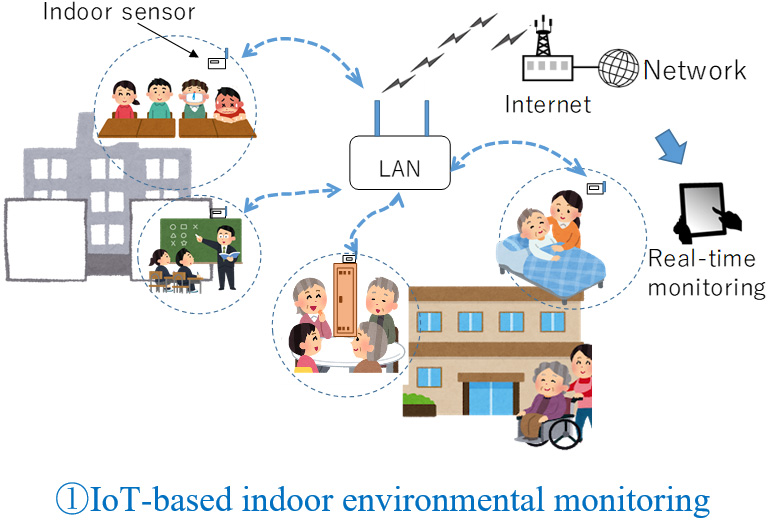Unit of research on digital twin for built environment
KEYWORDS
- built environment
- air conditioning
- heatstroke
- comfort
- energy saving
- digital twin
- building service
- ●A Study on Phase-Free Indoor Environmental Control Methods Using Digital Twins for Residential Environments
We define a “Indoor Environment Digital Twin” as the integration of environmental factor monitoring in actual residential settings (e.g., temperature, humidity, CO₂ concentration) with 360° VR data of residential environment specifications (e.g., ventilation systems, HVAC equipment, windows, doors, and floor plans). This “Indoor Environment Digital Twin” is intended to enhance occupants’ environmental affordances while enabling accurate “phase-free” environmental control methods that also address energy conservation. As a specific field of study, we focus on junior and senior high school gymnasiums equipped with air conditioning systems, which are used for a variety of purposes such as classes, club activities, and events, in order to identify the actual conditions of air conditioning use. Furthermore, we examine the influence of the “Indoor Environment Digital Twin” on gymnasium users’ air conditioning usage behavior.
Research staff
Professor
Architectural environment

Professor
digital twin and architectural planning

Associate Professor
monitoring of living environment

Associate Professor
Facility management

Research Introduction
Research objective
The experience of the COVID-19 pandemic has heightened the importance of indoor environmental management. Phase-free indoor environmental management, which can respond to both normal conditions and periods of infectious disease outbreaks, is a crucial element in the post-COVID era. In medium-scale buildings such as schools and elderly care facilities—unlike large-scale buildings where HVAC managers are stationed and appropriate air quality control is maintained—indoor environmental management is left to occupants without specialized knowledge. In such buildings, cases have been reported where, despite the presence of mechanical ventilation systems with sufficient capacity, windows are kept open continuously, leading to increased heating and cooling costs. One reason for this is that the mechanisms of environmental control, which differ depending on architectural layouts and equipment designs, are not effectively communicated to non-expert occupants; in other words, the affordance of the indoor environment system is insufficient.
To address this issue, we propose the development of a system called the Indoor Environment Digital Twin, which integrates 360° images of each facility’s floor plan, window/door/transom configurations, and ventilation specifications with real-time monitoring of indoor environmental factors (temperature, humidity, CO₂ concentration, and illuminance). This system is designed to support occupants’ indoor environmental control behaviors. In short: ① IoT-based indoor environmental monitoring + ② 3D visualization of building specifications = Indoor Environment Digital Twin.



